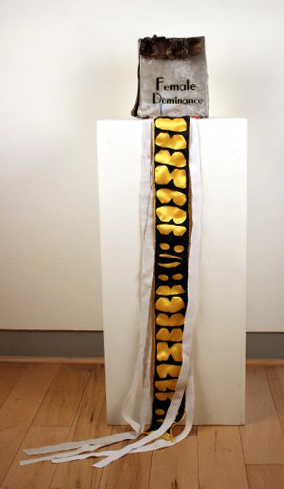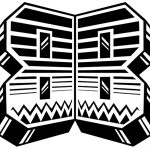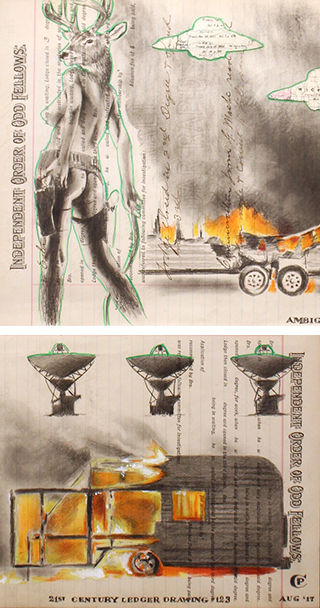
 DURING THE WEEK of SWAIA’s 96th Santa Fe Indian Market, form + concept gallery in Santa Fe opened the Broken Boxes exhibition with three days of events designed for interaction and conversation between art, artist, and visitor.
DURING THE WEEK of SWAIA’s 96th Santa Fe Indian Market, form + concept gallery in Santa Fe opened the Broken Boxes exhibition with three days of events designed for interaction and conversation between art, artist, and visitor.
Broken Boxes is a multigenre project centered around a podcast of the same name created and produced by sound and performance artist Ginger Dunnill. The podcast features extremely open, conversational interviews with “Indigenous artists, activist focused artists, Queer/Trans/NonBinary artists, women identifying artists, artists of color and mixed/lost/stolen heritage artists,” according to the Broken Boxes website.
Opening events began on Friday, August 18, with a birthday celebration in honor of White Earth Ojibwe activist Winona LaDuke of Honor the Earth, who was in attendance. The Art of Indigenous Resistance traveling exhibition was installed downstairs with the Broken Boxes exhibition upstairs. The Indigenous Resistance exhibition features a selection of artwork along with posters and other archival items that document the group’s 31 years of activism. For this event, they installed pieces relating to the Buffalo Field Campaign, which works to protect the buffalo herd at Yellowstone National Park. Honor the Earth organizer Kim Smith, whose collaborative piece with Makai Lewis provided a backdrop to the opening activities, curated the exhibition.
Saturday’s gathering moved outside the gallery for live painting and paper-cutting by several participating artists, including Ian Kuali’i and Yatika Starr Fields (Osage-Muscogee-Cherokee). The opening concluded on Sunday with an artists’ roundtable discussion.
The idea behind the Broken Boxes exhibition is to explore the many “boxes” that attempt to contain/restrain art and artists, both personally and creatively, from metaphorical ones imposed by stereotypes or institutional practices to literal ones like gallery walls and the boxes and crates in which artwork is transported from the studio. All artists in the exhibition have been guests on the podcast, and they were asked to incorporate the Flat Rate Priority Mail box in which they mailed their entries into their work for the show. One striking example is Nani Chacon’s wall-sized piece, ““Between a Black Cloud and a White Cloud He Found Her,” which incorporates unfolded cardboard boxes. Several artists present works outside their usual style, such as painter Yatika Starr Fields, whose mixed-media piece Home Is Where the Heart Is, Sometimes That’s a War Zone is composed of an unstructured tent suspended above a flattened box covered with a collage. Visual, auditory, textual, and textile pieces are presented alongside paintings and photographs. Some pieces are meant to be handled, such as Miyuki Baker’s these walls are fabric, which provides viewers with markers and hanging tags with which to add descriptions of their own “boxes” to the fabric hanging as well as ’zines that are meant to be picked up and read.

Without context, some pieces in the exhibit can appear haphazard, so it does pay to understand the intent and background of the exhibition. A statement posted just inside the gallery reminds visitors that all Broken Boxes events and projects are meant to “hold space” for people of all identities to express complicated, difficult questions.
At Sunday’s artist roundtable, multimedia ceramicist Cannupa Hanska Luger (Mandan-Hidatsa-Arikara-Lakota) said, “We don’t have answers, and I don’t think we should be expected to give the answers. I think it’s a process that we all engage with in our learning. We don’t know, but we’re willing to learn.”
When it comes to art and activism, finding the necessary questions can be as difficult—and as messy—as searching for answers. This exhibition asks visitors to take time to engage in that messy work alongside the artists. Through playful and serious pieces, the exhibition reveals the same free-form style that makes the podcast such an open and generous forum for listeners and guests.
The Broken Boxes catalogue release party will be held Friday, September 29 from 5:00 to 7:00 pm, and the show will be at the form + concept gallery until October 28.
For more information, visit formandconcept.center/exhibitions/broken-boxes.
